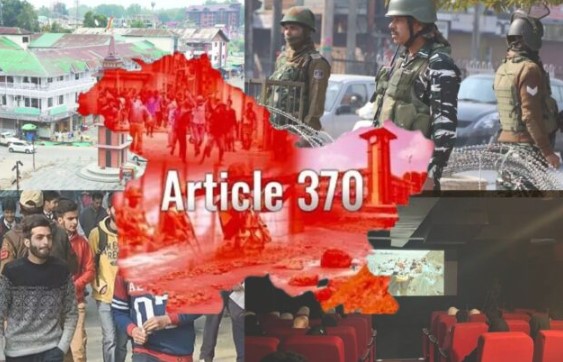August 5th holds an unforgettable place in the history of Jammu and Kashmir. In 2019, same day the Indian Parliament repealed Article 370 and Article 35(A). With this repeal, the provision of dual citizenship for Jammu and Kashmir ended, and the State’s special status was also abolished.
Following this, Jammu and Kashmir was divided into two Union Territories: Jammu & Kashmir and Ladakh. At that time, the central government’s goal was to bring prosperity to the valley. Now, five years have passed since the repeal. Let’s explore what changes have occurred in the state over these five years and what has remained the same. We will understand the new picture of Jammu and Kashmir through ten points.
Education and Unemployment: Since becoming a Union Territory, Jammu and Kashmir’s budget has increased by ₹41,000 crore. Improvements in education and health have been observed. In the year 2019-20, the unemployment rate in Jammu and Kashmir was 6.4 per cent, which has now reduced to 5.7 per cent.
Terrorism Issue: Terrorism has always been a major issue in Jammu and Kashmir. Although terrorist activities have decreased since the region became a Union Territory, a complete halt has not been achieved. In the past two years, terrorism in Jammu and Kashmir has increased, with 15 soldiers martyred so far in 2024 alone. Threats against pilgrims have exacerbated the situation.
Situation of Kashmiri Pandits: After the repeal of Article 370, it was expected that Kashmiri Pandits forced to leave Jammu and Kashmir would be resettled. However, this has not happened. To date, none of the 60,000 Kashmiri Pandits who left the valley due to terrorism have returned.
Elections: The last Assembly elections in Jammu and Kashmir were held in 2014, and there have been no Assembly elections since. The Supreme Court has also ordered that elections must be held in the region by 2024 at any cost.
Industry and Investment: The Central Government argued that the removal of Article 370 would lead to substantial investment in Jammu and Kashmir and Ladakh, boosting industries and businesses. However, concrete steps in this direction are still lacking.
Decrease in Separatism: Before 2019, Jammu and Kashmir was embroiled in stone-pelting and separatist agitation. These issues have been curbed since then, with incidents of stone-pelting decreasing by up to 99 per cent.
Surge in Tourism Industry: Tourism is considered a major source of income for Jammu and Kashmir. Every year, a large number of people visit the mountains to see the valley’s beauty. In recent years, the industry has seen a significant boost. Last year, 21 million tourists visited Jammu and Kashmir and Ladakh. This number is continuously increasing, which has also led to an increase in employment at various levels.
Changes in the Entertainment Industry: After the repeal of Article 370, the Central Government introduced a film policy. As a result, 102 films and web series were shot in 2023. Over the past three years, a total of 700 applications have been made, giving a boost to the entertainment industry.
Development Projects: Srinagar and Jammu are being revamped under the Smart City Project. Approximately 17.57 kilometres of new roads are being laid daily, which is double the previous amount.
Improvement in International Image: Jammu and Kashmir and Ladakh have hosted several global events in the past 2-3 years. The G-20 summit was also held here, which has not only established peace in the region but also improved its image among nations.

















